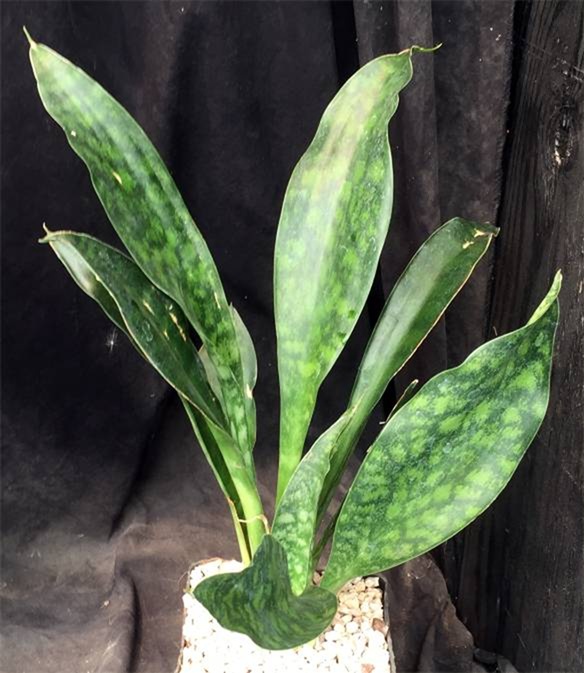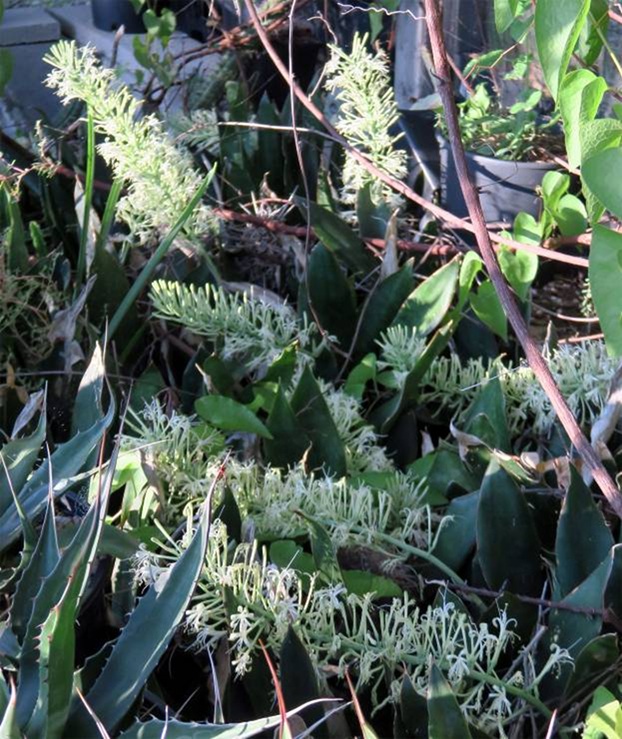| |
Sansevieria subspicata Baker |
| Protologue: |
Gardeners Chronicle ser 3, 6: 436 (1889). |
| Subgenus: |
Sansevieria |
| Group: |
Sansevieria concinna |
| Etymology: |
The epithet refers to the inflorescence, which is almost spike like. |
| Distribution: |
This species is only known from the vicinity of Maputo, Mozambique, in coastal thickets. |
| Brief Description: |
This acaulescent, rhizomatous species has 4 - 10 leaves that are erect or recurved-spreading, occasionally prostrate. Their shape is lanceolate with a length of 23-60 cm and a width of 2.5-5.7 cm, narrowed from about the middle downward to a short, channelled petiole. The smooth leaves have a soft tip and are dark green with vague to prominent mottling with a whitish leaf margin. The inflorescence is 30-40 cm long and simple with 1 - 2 flowers per cluster. The spike-like inflorescence that the epithet refers to becomes decumbent soon after a majority of the flowers open. |
| Similar Species: |
Several botanists have tried to subsume Sansevieria subspicata into Sansevieria concinna, reducing the former species to a subspecies. The dissimilarity of these two species suggests otherwise. The leaves of Sansevieria subspicata are not overtly spoon-shaped, for example, bearing only a short petiole. In leaf form, Sansevieria subspicata is more similar to Sansevieria fasciata, which occurs much further north and west of Maputo. The decumbent inflorescence of Sansevieria subspicata, at least in cultivation, makes it unique among the genus. |
| |
| |

Sansevieria subspicata in cultivation.
|
| |

A ground-bed cultivation of Sansevieria subspicata showing the decumbent inflorescence peduncles.
|
|
| |
| |
|
|
| |
| |
|
|

